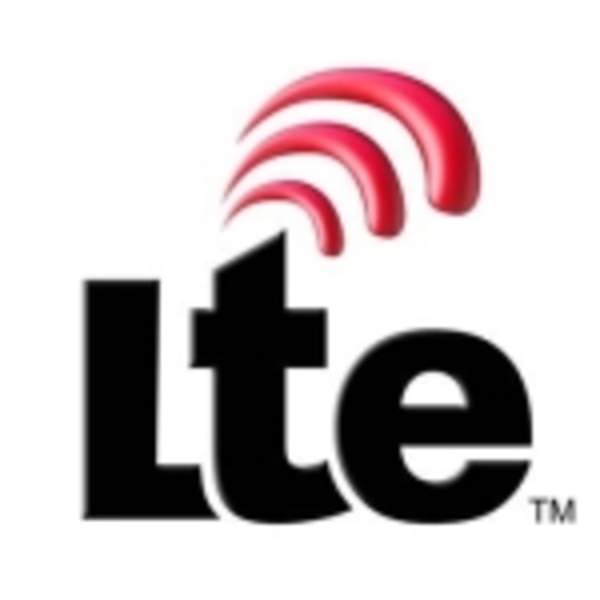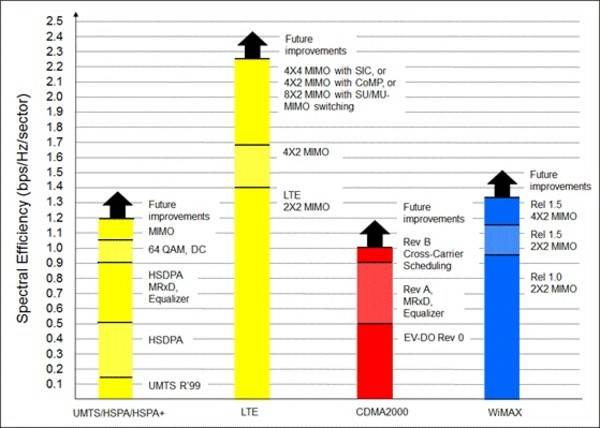If we’re going to have an Internet full of things so that we can friend our Coke machines and our refrigerators on Facebook, wireless carriers say there needs to be more wireless spectrum available to LTE and fourth-generation technologies than there currently is. Nonsense, said a group of Citi investment analysts last month, who provided explicit, mathematically detailed analysis that appeared to prove that, even by 2015, fully deployed LTE would only consume 52% of the available space.

That depends on which numbers you choose to believe, according to a report released this morning by independent telecommunications researcher Peter Rysavy (PDF available here). If you’ve heard the name before, Rysavy was the fellow who told the Mobile World Congress last year that the first impact of spectrum shortage would hit in 2013, in analysis sponsored by Research In Motion.
It’s not a pretty picture, and it doesn’t really defend the carriers’ position. The problem with the Citi analysts’ report, says Rysavy, is that it assumes networks will always operate at peak efficiency – the numbers that engineers quote when selling the idea of LTE to carriers like Verizon Wireless and AT&T. Actual spectral efficiency – which in this case refers to how many bits per second you can squeeze out of the fewest hertz of frequency – is about one-sixth that amount, Rysavy says.
“It is important to realize that there is a difference between average spectral efficiency and peak spectral efficiency,” Rysavy writes. “Under ideal conditions of low network loading and good signal quality, today’s adaptive wireless networks can achieve extremely high throughput rates, and so the peak spectral efficiency value can be very high. For network?capacity analysis, however, one must use the average spectral efficiency value, a value that is much lower than the peak value, since this is what allows for the calculation of the aggregate capacity of a cell sector.”
Citi Investment analysts Jason Bazinet and Michael Rollins explicitly cite the spectral efficiency of 4G to be 8.6 bits per hertz. That’s a number that’s been batted around as a product of formulas that take into account a 4G technology called orthogonal frequency-division multiple access (OFDMA). That’s the bandwidth modulation technology that divides a large stream into multiple smaller ones, the upshot being that a temporary failure to any one of the smaller streams has a much smaller impact on the overall quality of signal. In fact, by applying mathematical correction techniques to the signal as a whole, that small impact itself can be minimized.
Of course, this assumes that carriers always deploy OFDMA. In practice, however, carriers are limiting its use because of its power requirements – in some cases, for instance, using less effective modulation for uplinks to conserve power.

Rysavy Research Downlink Spectral Efficiency Comparison
Rysavy’s data not only blows some huge holes in the Citi analysts’ arguments, it also (without any editorial comment from Rysavy directly) calls into question the whole efficacy of LTE deployments in the first place. Citing data from the research he conducts on real-world deployments that he conducts as part of his everyday work, Rysavy says the actual measured spectral efficiency of deployed LTE is actually 50% lower than what the Citi analysts projected as the efficiency of LTE’s predecessor technology, HSPA+; and actually less than one-sixth the amount as Citi projected for 4G LTE.
Thus Rysavy declared the analysts’ conclusion that the U.S. does not face a spectrum shortage in the next five years “invalid because it is predicated on the incorrect analysis that 4G technologies have six times more capacity than they really do. This incorrect capacity analysis means Citi’s estimations of the amount of spectrum needed to support 4G technologies are also incorrect. Since capacity is direct proportionate to the amount of available spectrum, Citi’s analysis on spectrum demand for widespread 4G deployment would only anticipate one sixth the amount of spectrum than is actually needed.”
UPDATE 3:40 pm ET October 13, 2011: We’ve been asked about the veracity of our headline – specifically, whether the numbers that Citi researchers Bazinet and Roberts cited for spectral efficiency are the same numbers that “carriers promised.” It’s our understanding from the citation in the Citi report that their researchers’ numbers come from the FCC, and in turn from the carriers that provided that information to the FCC in regulatory proceedings. However, we’re going to do some more digging on that subject, and we’ll let you know what we find.










